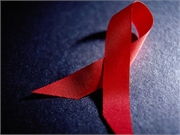Scientists Unravel Secrets of People Who Naturally Suppress HIV
By Amy NortonHealthDay Reporter

WEDNESDAY, Aug. 26, 2020 (HealthDay News) -- HIV researchers have long known that in rare cases, patients can naturally suppress the virus without taking medication. Now, a new study offers insight into how the body manages that feat.
Researchers said the findings are important because a greater understanding of these rare individuals -- called "elite controllers" -- could aid in the quest for an HIV cure.
It's believed that fewer than 0.5% of people with HIV are elite controllers. They have an unusually strong immune response to the virus, and are able to keep it below detectable levels in the blood.
"They naturally maintain what other people need ART to do," explained researcher Dr. Mathias Lichterfeld.
ART refers to antiretroviral therapy -- the drug "cocktails" which, starting in the 1990s, turned HIV from a death sentence into a manageable chronic disease. The drugs can suppress HIV for years, but they cannot eliminate it from the body.
That's due to the virus's ability to hide in the body. Its genetic material integrates itself into the DNA of the infected person's cells, where it silently camps out -- forming what's called a latent reservoir. ART cannot wipe out those reservoirs, and if the drugs are stopped, latently infected cells can start churning out copies of HIV again.
Similarly, elite controllers have latent HIV reservoirs. But they can keep the virus in check for 20 or 30 years -- medication-free, said Dr. Xu Yu, another researcher on the new study.
She and Lichterfeld are both based at the Ragon Institute of Massachusetts General Hospital, MIT and Harvard, in Cambridge. Researchers there have been studying elite controllers for years.
In this latest study, they used recently developed gene-sequencing technology to analyze blood samples from 64 elite controllers and 41 patients on ART.
And a clear distinction turned up between the two groups: In elite controllers, HIV was often integrated into parts of the cell genome that are essentially "gene deserts," Lichterfeld explained.
In other words, the viral genetic material was sequestered far away from the genes a blood cell uses to make proteins -- which indicates those infected cells will be less likely to churn out genetic copies of HIV.
The study is a "tour de force," said Rowena Johnston, vice president and director of research at amfAR, the Foundation for AIDS Research.
"This work provides intriguing differences between elite controllers and other people living with HIV, in terms of the DNA landscape into which the virus inserts itself," said Johnston.
Efforts like this to understand elite control, she said, may aid researchers hunting for an HIV cure.
But, Johnston said, "what remains elusive is a mechanism, or set of mechanisms, that explains how elite controllers end up with this unique constellation of integrated viruses that sets them apart from the great majority of people living with HIV."
The Ragon researchers suggest it's the immune system at work: Continuous pressure from the immune response might wipe out the cells likely to produce copies of HIV, leaving behind only small reservoirs of hard-to-reactivate HIV genomes.
That does not necessarily mean such "deep viral latency" is permanent, they added.
But, Yu said, this study "offers a blueprint for a functional cure" for HIV.
A functional cure would mean the virus remains suppressed without medication, even though it is not banished from the body. These elite controllers, Yu said, suggest that complete eradication of the virus may not be necessary.
Researchers are studying various strategies toward an HIV cure, including ones that would enlist the immune system.
But whether the natural phenomenon of elite control can be replicated remains to be seen.
"Even if we understood every aspect of an elite controller's immune response to HIV infection," Johnston said, "to date it has been enormously difficult to bend the immune system to our will to cure HIV."
One of the elite controllers in this study offered a particularly intriguing finding: The researchers detected no intact HIV genetic material in the patient's blood, despite analyzing more than 1 billion cells.
According to Yu and Lichterfeld, it's possible that person's immune system eradicated the virus.
At this point, only two HIV-positive people have ever been declared "cured" -- both after receiving stem cell transplants to treat cancer. The stem cells harbored a rare gene mutation that is protective against HIV.
"Here we have a third patient who looks similar, but without any treatment," Lichterfeld said.
A big question, he added, is whether there are other elite controllers out there like this patient.
The findings were published Aug. 26 in the journal Nature.
More information
The U.S. National Institute of Allergy and Infectious Diseases has more on research toward an HIV cure.

The news stories provided in Health News and our Health-E News Newsletter are a service of the nationally syndicated HealthDay® news and information company. Stories refer to national trends and breaking health news, and are not necessarily indicative of or always supported by our facility and providers. This information is provided for informational and educational purposes only, and is not intended to be a substitute for medical advice, diagnosis, or treatment.

